Introduction
The role of the city in modern society is rather high. It is so due to the social affairs and societal structure which are based on the grounds of the city. In this respect, one should clearly understand that the ideal city for the 21st century should follow the experience of the previous years and use the achievements of the contemporary designs and framework for the city outlook. In other words, the reliability of the discussion maintained in the paper is considered with the key challenges and opportunities for the city in this new century with new ideas in the field of science and technology. Thus, the paper is dedicated to assuming and particularly asserting the movements in the architectural and social thoughts which can be prescribed for the city of the future. The structure of the paper encloses several features as of the particular theories according to the optimal decision for the environmental safety and appropriate architectural design. The points on the limitations of the main theme in the discussion will also be touched upon. All in all, it is vital to evaluate the features of the city in the 21st century, to work out the optimal plan for further movement toward the ideals of the city in terms of the new domain of peoples’ relationships. Thus, the manifesto of the city of the 21st century is concerned in most points with the social background of the society along with its credibility for having such amenity and the current achievements in the architectural design and technological implementation.
Discussion
Nowadays cities matter greatly in the world. This administrative unit of each country comprises the fullness of information about its residents and heritage as well. This is why mankind leads to concentrate mainly in the urbanized territories throughout countries. First of all, it is the result of the values which every city in its huge and versatile estimation preserves for the citizens. In other words, the role of cultural, architectural, religious, political, entertaining, and other sides of the city is enclosed in the concept of it. Moreover, the city is the cradle for the talents and achievements of mankind. It is no surprise that from ancient times most inventions in various fields of peoples’ activities were achieved in large cities of the time. Athens, Rome, Paris, Moscow, London, etc. are the cities that are known for being the material and formal or surrounding background for mankind’s success.
The city should be evaluated in its dynamic nature and the process of migration and growth are inevitable for it. In this respect, Aristotle provided a thought that with the process of constant growth the city should be controlled and regulated (Foo and Yuen 1999). Earlier in the work “The Republic” Plato attempted to describe the ideal city being placed in the ideal state. However, with the flow of time, old assumptions according to a definite idea may simply become out of date. Thus, Plato criticizes the democratic society due to its probability to ignore authorities. Plato’s Ideal State and the place of the city in it is “far too suppressive and single-minded for today’s way of thinking” (Huffman 2009, 1). Nevertheless, the city should be made out as the number of architectural units concentrated in the definite territory. On the contrary, it is the system of social relations between individuals which are strictly related to the urban realities maintained in the superficial outlook of the city.
With the demographically difficult situation in the 21st century, the cities are amenable to increase now and then. In this case, they are growing more in terms of height, meaning the spread of skyscrapers which was started in the twentieth century and continues until now. On the other side, the genuine nature of each city is mixed today due to the flows of multiculturalism and multinationalism in the world. The transportation systems are also increasing in the technical and technological approaches, so there is no problem in moving throughout the city or cities at all.
Previous research of experts in social development provided a rather logical and fair statement in the following way: “The ‘ideal city’ which evolved throughout the 20th Century, however, may not be sufficiently sustainable in the 21st Century terms” (Organization for Economic Co-operation and Development 2002, 35). Hence, the new requirements for the city of the 21st century should be worked out and used in the next years. This approach should encompass the whole picture of the development of urbanized life and the urge of people toward the so-called city life. In this respect, the aesthetical and cultural preferences should be correlated with the particular contingent of people living in the city along with the historical cut and traditional background. It seems difficult to realize and adequately evaluate the scopes of the current issue. However, the needs of people cannot but be included in the concept of the city. Thus, the next section of the research is intended to work out the previous attempts of mankind to develop the ideal environment for living in the city with the original implementation of principal features.
Design theories
At the moment the mankind due to the urge f scientific thought has already collected the most optimal decisions for the architectural and landscape design of the ideal city in terms of societal relation to it. Thereupon, the appropriate theories which were outlined as whole movements are known for their originality and specific grounding for the convenient life of citizens. The City Beautiful, Garden City, Modernism, and Post-Modernism approaches are evaluated as the best solutions for the new challenges and demands of the cities. All of them are peculiar as of the place of architecture, nature, and people in terms of the urbanized reality. Though, the description of each is necessary for the estimation of the probable contributions in terms of current perspectives for the city.
The City Beautiful
The City Beautiful is the theoretical approach toward the city design which appeared in the late nineteenth century, as the result of the struggle of the American economy in many parameters. The thing is that people sought rational decisions as to their convenient and comfortable living. Daniel Burnham and other followers of the movement were excited by the growth of the population and its diverse nature. This is why the idea of beauty being the most efficient social form of control was highlighted at the time. It was made by the theorists of the movement for aesthetical implementation:
The idiom the City Beautiful leaders used in their ideal civic centers was the Beaux-Arts style, named for the famous Ecole des Beaux-Arts in Paris, which instructed artists and architects in the necessity of order, dignity, and harmony in their work (the City Beautiful 2009, 1).
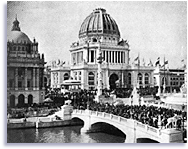
The concept of “White city” was presupposed with the cultural and architectural domains of the movement. Thus, the restoration and renovation in the outlook were made in accordance to such cities as Washington DC, Chicago, and Denver. These examples of the City’s Beautiful style still impress the visitors. Moreover, the city beautiful became the “visit card” for some largest cities in the United States due to the particular composition of features and main elements in the architectural design. In Denver, for instance, this was assumed with the 1893 World’s Columbian Exposition in Chicago and the projects of the White City which was adopted on behalf of the Mayor of Denver (The Denver Public Library 2003).
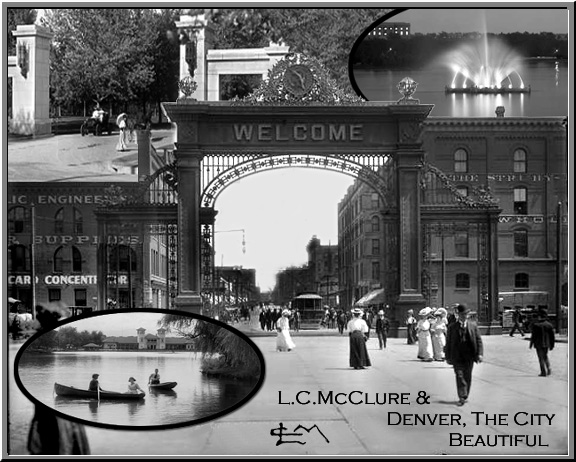
All in all, the City Beautiful is the manifestation of grace and elegance of the city with its predominant attention on the comfort and amenities for the civilized nations. This prospect also underlines the idea that this conception is worth implementing in terms of contemporary reality. It is better to say that it exists already. However, the observation of the 21st century city would be incomplete without other conceptual decisions.
Garden City
The creation of Sir Ebenezer Howard, the Garden City was the result of the transition of centuries in the scientific and technological approaches in the early twentieth century. In this respect the particular evaluation of this model for the city represents the tripartite unity of radial boulevards with open spaces: “While its power as a practical demonstration should not be underestimated, the demonstration was largely understood as a model environment not a model society” (Ward 1992, 4). Hence, the explanation of the Garden City can be reproduced better out of concrete visual examples for it.
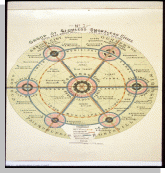
The description of this technological decision can be maintained with its prior perspective of the central city with its radial concentration of the subordinate elements in the form of a triangular model of “three magnets” (Ward 1992). In this respect, the main idea of the Garden City is to place lots of people (approximately 32, 000) on a relevantly small piece of territory (Ward 1992). The network of Garden Cities is appropriate for the idea of a large central city. This model fully resolved the demands of the time in appearing agglomerations around the major cities.
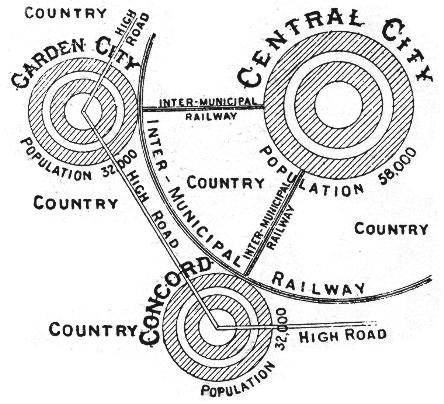
The segment of the particular peripheral cities in the concept incorporates the unity of main requirements for the contemporary citizens in order not to make everyday life routine. Moreover, the city presupposes the developed transportation system which subordinates to the circular model of the main
directions and plan of the city. This helps to make the interrelation of all features of the municipal significance appropriate to the current needs of citizens. Thus, the whole notion of the Garden City is imposed into its division into central city and satellite cities. The circular patterning of it is considered to be the most applicable and reliable form for making social living more convenient and practical in terms of growing demands of the population as well as scientific and technological innovations being obvious at the time. It was met with a rational approach because there raised the thesis that “garden city principles could be inimical to solving low-income housing problems” (Ward 1992, 79).
Modernism
The crucial moment which happened after World War II made scientific and technological thought radically improve in terms of the social needs of people. The alleged modern period appeared for the formation of the city conception. In this case, the significance of architecture as it is was implied in terms of practical and effective use. In other words, the city needed extra spaces for the growing population and interests shared in it as well: “City users contribute to change the social morphology of the city and to constitute what Martinotti (1993) calls the metropolis of the second generation, the city of late modernism” (Foo and Yuen 1999, 158). In this model for creating cities, the main approach contemplates the significance of the economical and financial constituents with business centers, high productivity of markets, high technological dimensions. The particular feature of it is that modernist city is too fragile and fully depends more on economical relations, not social ones. However, high buildings with the developed structure of internal systems for sustainment resolve the problem of surplus population. One thing which is most debatable according to the problem is the probability of cost recovery for such a program of the city formation. The thing is that lower and some middle classes are not allowed to share such spaces in the city owing to a higher price. Notwithstanding, this form of the city structure provides a better understanding of essential problems with population growth and its rational placement within the city.
Post-Modernism
Post-Modern evaluation of the city is the transitional point for the American cities in the late decades of the twentieth century. The idea of more central spaces within numerous buildings was at the core of the postmodern reality (Hutton 2004). Also, business and entertainment demands were taken into consideration in the concept of a postmodern city. Thereupon, such huge cities as Los Angeles, Las Vegas, and others appeared in a transformed form after the 1970s meeting the requirements of the time accordingly: “This postmodern picture of cities has several important similarities to what one might call the hyper-modern city – the image of the city as portrayed by the theory of self-organization” (Portugali 2000). Though, the idea of the postmodern city is closely concerned with the significance of living in the post-modern society where the main product is information. For this purpose, the city under analysis is understood as the way of the implementation of new ideas and approaches, so as not to lag behind time. Furthermore, the importance of high technologies and innovative devices and buildings of the new generation is highlighted with airports, highly developed system of transportation using four dimensions for this: water, air, ground, and underground connections. Hong Kong, New York, Los Angeles, Las Vegas, Chicago, Dallas, Kuala-Lumpur, etc. are the cities that are designed in terms of postmodern requirements of the time (May 2008).
In this respect, the idea of originality in buildings and related to houses areas is considered with high density and many-factored destination for appropriate use. Las Vegas is one of the greatest examples of suchlike cities, because “Las Vegas strip, lined with fantasy buildings that bear no relation to each other, other than the fact that they look like images lifted out of the movies” (Transparency 2009).
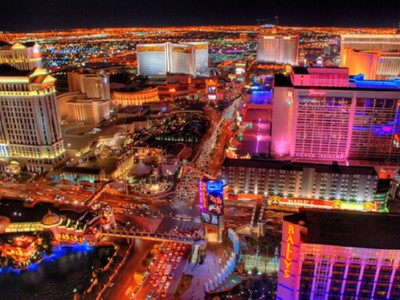
In turn the city of Dubai is also built with the implementation of the highest technologies and methods of the time, so that to make the city serve for the attractive function as of the tourists throughout the world. This city is fairly considered to be the city of the future due to the grand projects and their implementation in reality.
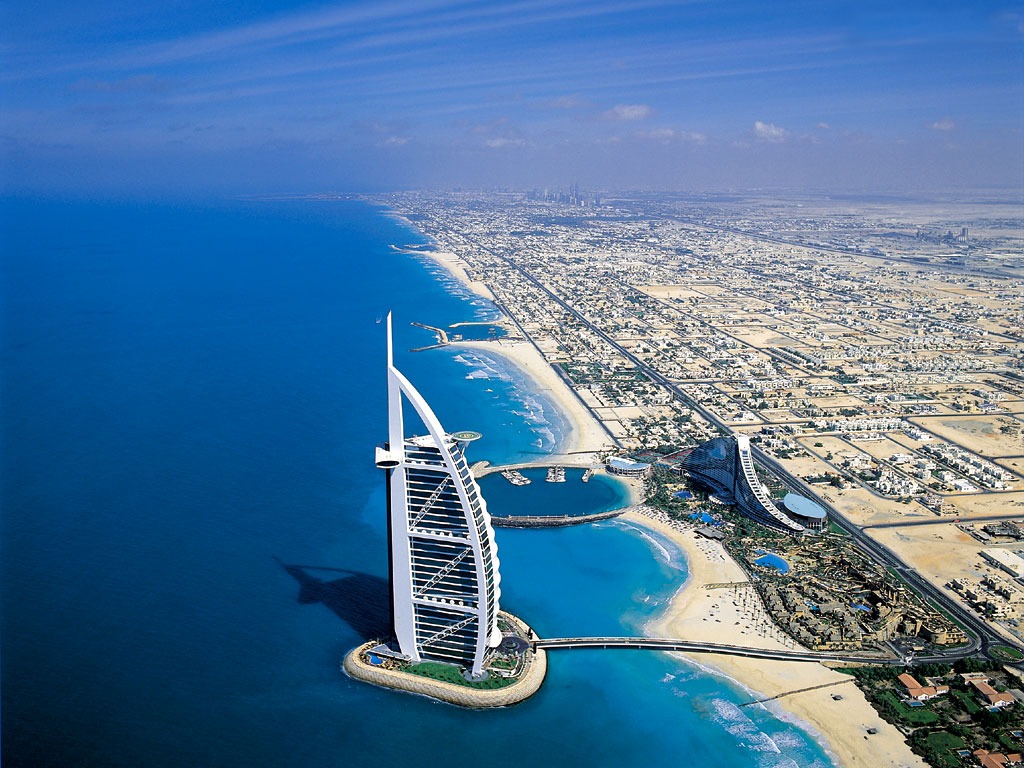
All in all, this type of city structure, meaning postmodernism, is the most reliable and adequate for contemporary humanity with its versatile system of needs and requirements. The world is colored with great examples of innovative thoughts in architecture with glimpses at the ecological and energy-saving parameters in the use of the building. Thus, postmodernism may be proud of the technological and scientific achievements being used in modern structural components of the city.
Personal evaluation
The reasonable approaches of the city models stated above give a rather efficient and rather rational background for the analysis of the contemporary society in the world scope. The importance of architecturally new suggestions as of settling people should be correlated, first of all, with the particular social programs as for the support of less protected categories of the population. Second, for the predicted increase of the population in the world, mankind should use all dimensions for living and working, namely: spaces over and underground and over and underwater. This will need more investments; however, it will make the situation not so problematic. Regarding the territory on which humanity lives one should think of the fact that most of the territory on the planet is covered with water. Thus, the 21st-century city should be placed in the water dimension. Continuing this suggestion, there should be rather new kinds of vehicles including the magnetic lines for making no force of friction (Liscombe 2006). This will help make the transportation system faster. The lines of suchlike transport should be maintained in special tunnels for safety. Air space should be used appropriately so that to solve the problem with traffic jams in the streets. One more approach is the diverse systems for communication and verification provided in such cities, so that not to lay down at stake the security and safety of the city. The air space can be increased up to three kilometers aloft and the water dimension can be used up to 200 meters deep (Přikryl 2004).
Flaws of the manifesto
The research and suggestions provided in the manifesto declare the theoretical and hypothetical predictions for the city of the 21st century. The main problem may be concerned with the depletion of natural resources, and particular financial support maybe not be enough. In this respect, the projects for the city of the future should be correlated and applied in the long-term perspective. So the possibility of the higher technological approach is essential solely for a few cities in the future. One of them is thought to be Dubai. Also, the discussion in the research does not relate to the socio-political and socio-demographic peculiarities of the countries in the world to state direct proposals for the renovation of the cities. The political vulnerability is enclosed in the changeability of powers in comparison to long-term perspectives of the city projects. Thus, some points according to the city design and proper investments may be changed or reduced at all.
Bibliography
Foo, Ah Foong, and Yuen, Belinda K. P. 1999. Sustainable cities in the 21st century. London: NUS Press.
Huffman, Rick “Plato’s Ideal City – Part 3 – The Problem With Democracy.” Plato’s Ideal City – Part 3 – The Problem With Democracy EzineArticles.com. Web.
Hutton, Thomas A. 2004. Post-industrialism, Post-modernism and the Reproduction of Vancouver’s Central Area: Retheorising the 21st-century City. Urban Studies, Vol. 41(10): 242-248.
Liscombe, Rhodri Windsor. 2006. THE WORLD URBAN FORUM 2006: Vancouver Working Group Discussion Paper. Vancouver, B.C.: University of British Columbia. Web.
May, Jon. 2008. Postmodern Cities and Spaces. Web.
Organisation for Economic Co-operation and Development. 2002. Urban renaissance: Canberra, a sustainable future. Paris: OECD Publishing.
Portugali, Juval. 2000. Self-organization and the city. Berlin: Springer.
Přikryl, Richard. 2004. Dimension stone 2004: new perspectives for a traditional building material : proceedings of the International Conference on Dimension Stone 2004, 14-17 June 2004, Prague, Czech Republic. London: Taylor & Francis.
The City Beautiful Movement. 2009. Web.
The Denver Public Library. 2003. The City Beautiful. Web.
Transparency. 2009. Las Vegas: Postmodern City of Casinos and Simulation. Web.
Ward, Stephen Victor. 1992. The Garden city: past, present, and future. London: Taylor & Francis.